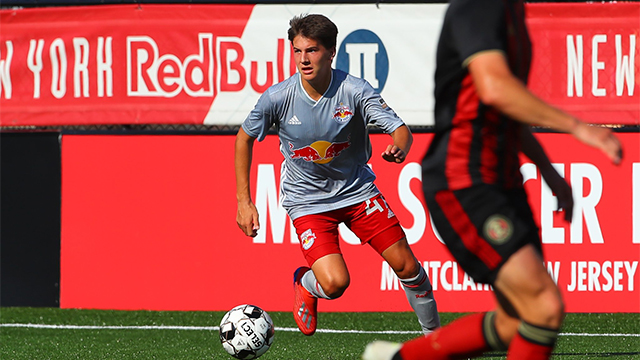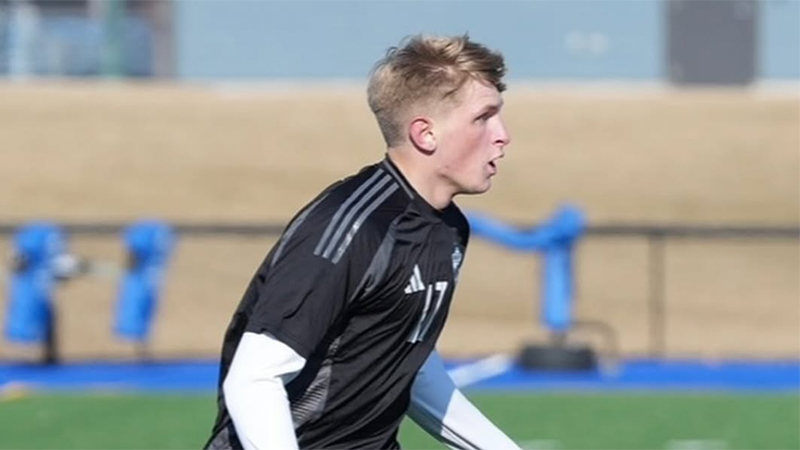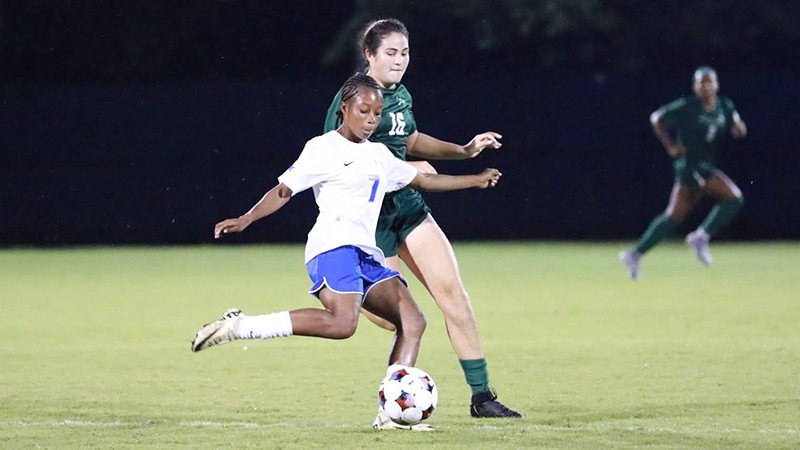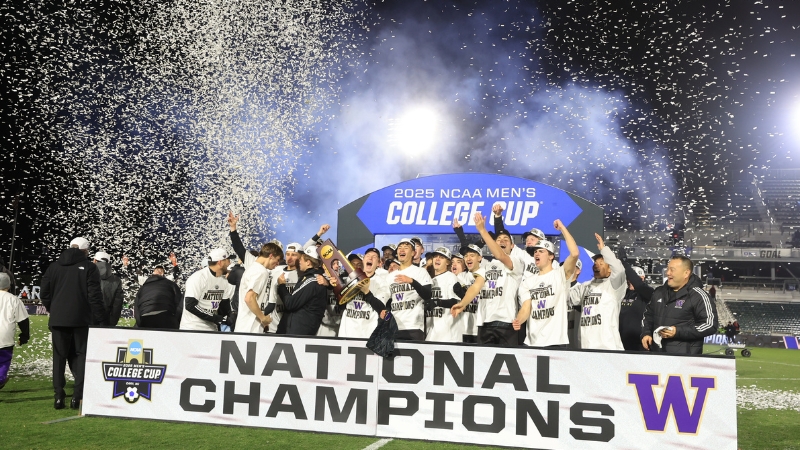Talent ID at the New York Red Bulls Academy

Soccer fans around the world will know that when it comes to the marriage of Red Bull and soccer, a certain style can be expected.
While there are variations at the different teams in Europe, North and South America, Red Bull teams tend to be focused on high pressing up the field and looking to disrupt what the other team is trying to do. The teams based in New York, Leipzig and Salzburg each have their own variation of that style.
But how does that look within the context of an academy in North America? New York Red Bulls Academy Director Sean McCafferty pointed out a recent Homegrown signing as a good example of how the organization looks to strike a balance when it comes to bringing players through.
“John Tolkin’s a great example of somebody that’s one of our academy products that signed with the first team,” he said. “John is technically fantastic. He is smooth in possession, his ability to break lines, the disguise he has on the ball. Some of the things John is working to improve on is maybe the other side. Maybe it is the aggressiveness, maybe it is the ability to be stronger in the challenge. He’s a young player and he’s going to evolve.”
Balancing the need to develop well-rounded players that can fit the organization’s system is critical within what the Red Bulls are trying to do – from the academy levels up to the teams that compete in the United Soccer League and Major League Soccer. From McCafferty’s perspective, the holistic approach is important when evaluating players to either keep in the setup, bring into the academy or look for opportunities elsewhere.
“We value technical efficiency, decision-making as much as everybody else,” he said. “For us, at the academy levels, we don’t want to just dominate against the ball, we want to dominate every single facet of the game. Every single area of the game.”
That feeds strongly into the player identification process at the club. Whether it’s players in market – or potentially scouting players from out of market to join the team’s nascent homestay program – there are obviously certain criteria the organization utilizes. That can start with something as simple as looking for a center back that can dominate aerial duels and play simple passes out from the back.
Of course, in McCafferty’s experience, it varies from player-to-player, and some of the ones that start with fewer obviously stand out characteristics end up developing into the best pros over the long run.
The Academy Goals of the Season pres., by @Wendys!
— Red Bulls Academy (@RedBullsAcademy) May 6, 2020
This week we focus on the top stay on the ball goals!#TheFutureIsBright | #RBNY pic.twitter.com/X3kHq99ZGj
“You try and bring in players that are certainly talented and maybe tick more boxes than others but I’ve been doing it long enough that players that sometimes that players the least boxes but maybe tick one or two, they’re the players that rise to the top,” he said. “They’re working harder, they have to do more, whether it’s study more, immerse themselves more in video and understanding the game and players in their position that are top level. Just finding players with weapons and finding players by position that fits our player profile and what you’re looking for. You need different ones.”
As he pointed out in a conference call with reporters last week, one of the things that he’s been trying to do since taking over the academies is trim roster sizes. And in an effort to work to bolster local relationships, McCafferty and academy staff have jumped on Zoom calls with players that won’t continue in the academy, looking to help them find the right club.
That works to ensure that the players leaving the Red Bulls get the minutes they need to continue developing. Ensuring players have somewhere to go is a step towards maintaining a positive relationship where they could return to the club one day.
“The loop is not closed until they sign for another club,” McCafferty said. “Because we’re not going to get them all right. There are going to be players that maybe we release right now that we don’t think are quite there for whatever reason, there’s a million examples of players that come back in. They develop at different stages, but they need to play.”
Of course, developing and identifying players requires a league for academy players to compete in. With April’s news of the Development Academy shuttering, MLS has announced plans to run its own youth competition.
That remains a work in progress, with McCafferty on numerous calls with other academy directors and league officials looking to sort out the process. One thing he made clear is a desire to line up against international opposition as frequently as possible.
“We want to grow as an organization as well, [have] more international competition, for example, that was really beneficial,” he said. “Our 06s got to play in the ICC [Youth Cup in December] against Tottenham Hotspur, got to play against Paris St. Germain. They're just invaluable experiences, not only for us, but for the young American players. It’s a different feel to it, a different look. PSG had a No. 6 playing for them who plays up a few years but he came age-appropriate for this and he’s just different. You don’t see that type of player very often when you're here and it was hugely advantageous for not only the players, the staff to say, 'okay, that’s what a top European, pro-to-be looks like.'”
A longer season is also high on his checklist. At his previous stop at Barca Academy, McCafferty said they played around 10 more games than teams do in the Northeast. Obviously, weather is an impediment, but it’s going to be a strong point of emphasis with the new setup.
“I feel one of the biggest negatives is the break in the season is far too long for our youth players,” he said. “You get a rhythm going, and you’re stopped. You go again, maybe two, three months later until the next competitive game. You go from the DA Showcase in Sarasota, early December, to early March if you’re lucky, for the next competitive game. For us, it’s too long of a break and it slows the development of the players when they are just getting going.”
Considering that this is coming together during the backdrop of a global pandemic, there’s no timetable for when the new MLS youth competition to start. McCafferty said that the layoff has allowed them to prepare as though things will restart in September, while closely following the guidelines set by federal and local government.
Not getting into training is obviously a negative, but on the flip side, the organization is more prepared than in normal times – whenever it’s safe to step back on the field.
“We’re doing all the things necessary to be fair that you probably wouldn’t get the time to do in the normal schedule of a season,” McCafferty said. “Operationally, administratively, planning-wise, we’ll be the best we’ve ever been. But hopefully we get out there and remember how to kick it around.”
Headlines
- Recruiting Roundup: December 15-21
- How Do I Get Scouted by TopDrawerSoccer?
- 2026 Women's Division I Transfer Tracker
- Washington Wins First National Title
- Men's College Cup Final Preview
- IMG Academy Player Rankings: Boys 2027
-
Commitments: Looking at Loyola Marymount

- NC State Advances to First College Cup Final
- Washington Dominates College Cup Semifinal
-
GA Showcase/Champions Cup Goal Scorers




